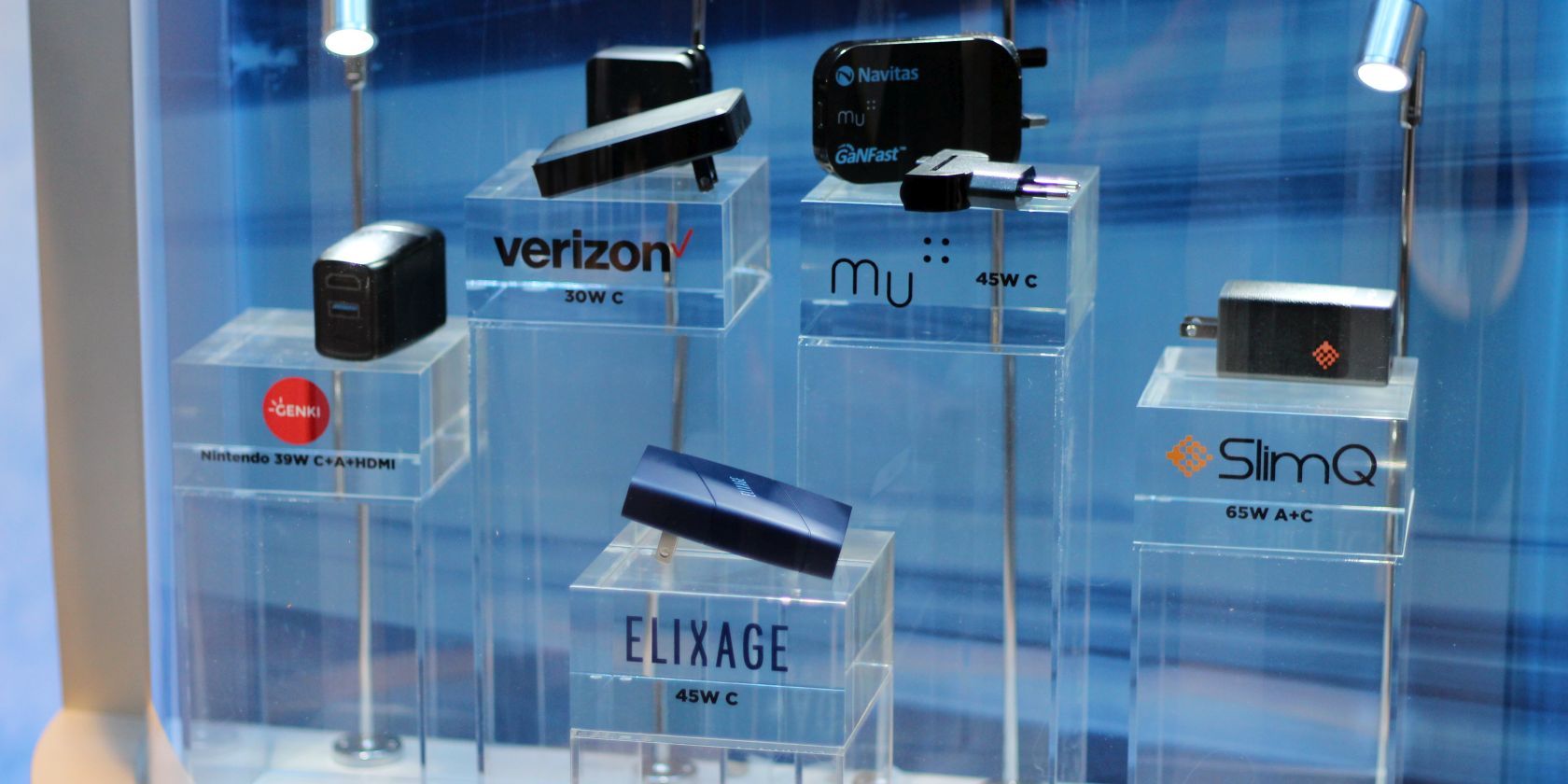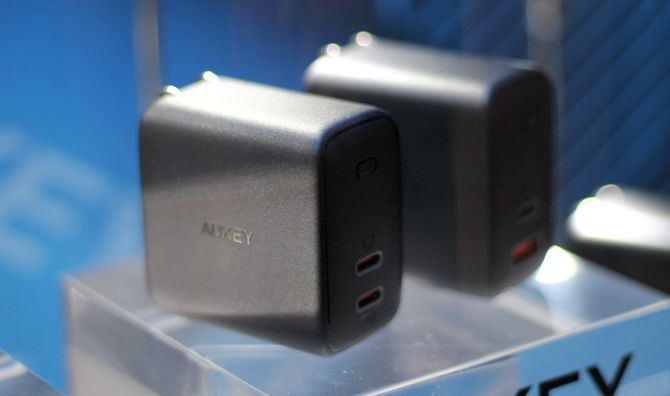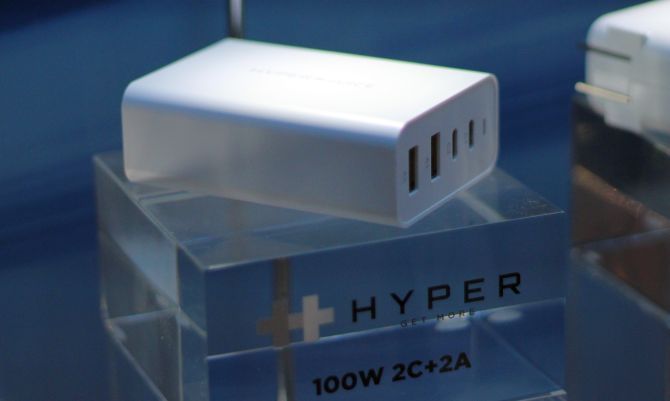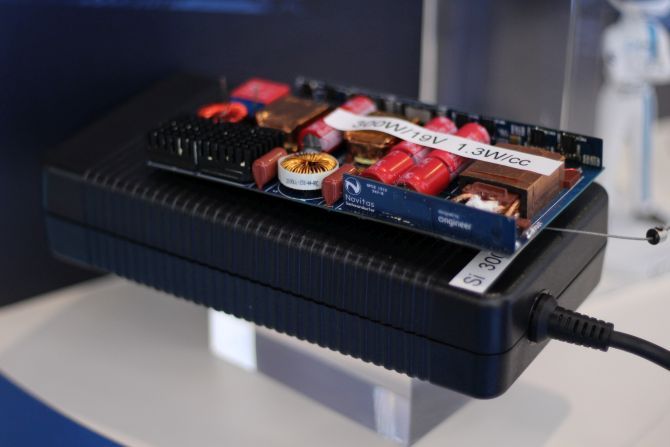Gallium nitride (GaN) semiconductors continue their revolution of the charger and power supply industry. The secret to their success is GaNFast technology. GaNFast is Navitas Semiconductor's proprietary implementation of GaN semiconductors. Chances are, if you find a charger that's more efficient and smaller than your last model, it uses semiconductors from Navitas.
And, as of 2019, there are no other GaN-based semiconductors on the charger market.
What Is Gallium Nitride?
GaN is a revolution in the physical materials that make up transistor technology. And it's better in almost every way imaginable. The newer material is cheaper to produce, more efficient, and---above all else---it produces less waste heat. The new chargers come from a variety of companies. The big releases this year came from Aukey and Hyper. But there were many manufacturers with GaN chargers.
Aukey's Four USB-C Chargers (100W, 61W, 27W)
Aukey is producing four new USB-C Power Delivery (PD) chargers for 2020. One is a 61-watt unit with dual USB-C outputs and the other is a 27-watt unit with a single USB-C PD output. It also includes two 100-watt units, one capable of USB-C and USB-A and the other only USB-C.
The 61-watt unit can simultaneously charge the equivalent of two laptops simultaneously.
The chargers include some fascinating options. Among these is Genki's Nintendo Switch USB-C PD dock and charging station. The dock includes such ports as HDMI, allowing users to throw their Switch into the dock and send video to a larger screen while at the same time delivering a PD charge. The charger received an official license from Nintendo---meaning it almost certainly won't endanger your device's safety.
Hyper 100-Watt USB-C Charger
Far and away the best charger that I saw is the Hyper 100-Watt Charger. While it's about the same size as most other brick-style chargers, it can hit 100-watts with two USB-C ports and two USB-A ports. Provided that it manages to get a USB-IF certification, the Hyper will be the highest-wattage GaN charger with four USB ports worth using. However, if it doesn't get USB-IF certification, I wouldn't bother.
Other Chargers
I didn't see anything special about the other chargers with GaNFast semiconductors in them. Aside from being more efficient and smaller than silicon-based chargers, GaN-equipped chargers have to differentiate from one another using aesthetics, ports, features, safety standards, and quality control. For most consumers, though, the most important features are the number of ports and wattage output.
The EggTronic USB-C charger, for example, outputs 65-watts over a single USB-C port. The other chargers include:
- Verizon's 30W USB-C charger
- Elixage's 45W USB-C charger
- SlimQ USB-A + USB-C charger
- AMC Technology's 65-watt USB-C charger
- Belkin's 65-watt 2 port USB-C charger
I did not see any new chargers from Delta, which is perhaps the most reliable name in the charger industry. However, if any representatives from Delta reach out to me, I'll be sure to update this article.
Why Silicon Is Going Obsolete
The older material used in most transistors, and computer processors, is silicon. Silicon is an unusual material in that it can function as a conductor and a resistor of electricity. We refer to these materials as "semiconductors".
Unfortunately, as engineers and scientists have tried to cram more and more transistors into shrinking spaces, the energy "leakage" from these silicon transistors has presented a serious problem. Science needed to come up with a replacement material that produces less waste heat at denser transistor counts. And that's where gallium nitride comes in.
GaN is a more efficient material for transferring electricity, it wastes less energy, and delivers power without heating up as much as silicon. Consequently, all consumer electronics that use transistors may one day use gallium nitride. While at present, GaN's most popular uses are in charger and power-supply technologies, the future will involve a much wider spectrum of devices.
Navitas Semiconductor doesn't only operate within the charger space. Its GaNFast semiconductors have made their way into numerous applications, including a Black Magic Designs external graphics card.
Perhaps one of the most useful future implementations is as a computer power supply inside the picoPSU power supply space. While there are scaling issues with creating larger wattage power supply units using GaNFast, such as with beefy gaming PCs. However, sub 400-watt computers could in theory support GaNFast power supply units, which is certain to lead to a renaissance in fanless and small form-factor computers.




